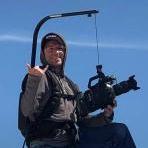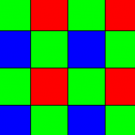
currensheldon
-
Posts
436 -
Joined
-
Last visited
Reputation Activity
-
 currensheldon got a reaction from Super8 in Canon Cinema EOS failure to tap Netflix
currensheldon got a reaction from Super8 in Canon Cinema EOS failure to tap Netflix
American Factory is the doc of the year, yep. Great film.
I think Canon really blew it with the C300 Mark II. The original C300 was one of a kind and huge for all sorts of productions. By the time the Mark II came along, there were much cheaper and more specced out options (FS7 being the obvious one). I won't say better because I still like Canon's image considerably more, but hard to argue with 4k 60fps, 180fps in HD, more codec options - all for about half the price.
With that said, I think Canon is moving in a very good direction with the C500 Mark II and 1DX Mark III. Everyone has been comparing the C500II and FX9, but I don't think that's going to be the real comparison because the C300 III will be in that same $11k price range when it is released (apparently very soon, probably NAB 2020). Here is how Canon should differentiate its lineup:
C700 - nobody cares.
C500 II - full frame, 6k raw, all 10-bit codecs - $16k
C300 III - full frame, 4k only, 4k 120fps, 4k raw, all 10-bit codecs (basically a C500 II but without the 6k options and 6k raw) - $10-11k - THIS would the direct FX9 competitor.
C200 II - Just a C200 but with the 10-bit codec (Super35, 4k raw, 10-bit 422 4k, 60fps) - $7499
C100 III - Super35 sensor, as small as possible, no raw, 10-bit 422 4k in 60fps - $5499 (and SMALL - for Ronin-S gimbals. Maybe 2/3 the size and weight of C200).
If they did that (and soon), they would have a great range of products from journalism/broadcast/documentary up to feature film and narrative series - all Netflix approve with plenty to differentiate the costs.
The most important ones and the two they should release this year (since they are rumored to be releasing two this year) would definitely be the C300 III and C100 III.
-
 currensheldon got a reaction from Django in Canon Cinema EOS failure to tap Netflix
currensheldon got a reaction from Django in Canon Cinema EOS failure to tap Netflix
American Factory is the doc of the year, yep. Great film.
I think Canon really blew it with the C300 Mark II. The original C300 was one of a kind and huge for all sorts of productions. By the time the Mark II came along, there were much cheaper and more specced out options (FS7 being the obvious one). I won't say better because I still like Canon's image considerably more, but hard to argue with 4k 60fps, 180fps in HD, more codec options - all for about half the price.
With that said, I think Canon is moving in a very good direction with the C500 Mark II and 1DX Mark III. Everyone has been comparing the C500II and FX9, but I don't think that's going to be the real comparison because the C300 III will be in that same $11k price range when it is released (apparently very soon, probably NAB 2020). Here is how Canon should differentiate its lineup:
C700 - nobody cares.
C500 II - full frame, 6k raw, all 10-bit codecs - $16k
C300 III - full frame, 4k only, 4k 120fps, 4k raw, all 10-bit codecs (basically a C500 II but without the 6k options and 6k raw) - $10-11k - THIS would the direct FX9 competitor.
C200 II - Just a C200 but with the 10-bit codec (Super35, 4k raw, 10-bit 422 4k, 60fps) - $7499
C100 III - Super35 sensor, as small as possible, no raw, 10-bit 422 4k in 60fps - $5499 (and SMALL - for Ronin-S gimbals. Maybe 2/3 the size and weight of C200).
If they did that (and soon), they would have a great range of products from journalism/broadcast/documentary up to feature film and narrative series - all Netflix approve with plenty to differentiate the costs.
The most important ones and the two they should release this year (since they are rumored to be releasing two this year) would definitely be the C300 III and C100 III.
-
 currensheldon got a reaction from tweak in How is this funded? Mega rich YouTubers
currensheldon got a reaction from tweak in How is this funded? Mega rich YouTubers
I think we've seen this for the past 2-3 years. Instagram turned into a platform for selling you stuff a few years ago and now Youtube is exactly the same. This is rampant consumerism at an all-time high. And honestly, camera gear and electronics are one of the worst offenders.
There is a large selection of Youtubers who seem like fine people but are making a good chunk of money by promoting incredibly wasteful consumerism. I believe our current widespread depression and addiction epidemic is based on these false "social" channels and "relationships" that are actually more about envy, greed, and jealousy than actual real human connection.
Maybe without knowing it (but some of them do), these Youtubers and Instagram "influencers" are contributing to people's increasing unhappiness.
-
 currensheldon got a reaction from Kisaha in How is this funded? Mega rich YouTubers
currensheldon got a reaction from Kisaha in How is this funded? Mega rich YouTubers
I think we've seen this for the past 2-3 years. Instagram turned into a platform for selling you stuff a few years ago and now Youtube is exactly the same. This is rampant consumerism at an all-time high. And honestly, camera gear and electronics are one of the worst offenders.
There is a large selection of Youtubers who seem like fine people but are making a good chunk of money by promoting incredibly wasteful consumerism. I believe our current widespread depression and addiction epidemic is based on these false "social" channels and "relationships" that are actually more about envy, greed, and jealousy than actual real human connection.
Maybe without knowing it (but some of them do), these Youtubers and Instagram "influencers" are contributing to people's increasing unhappiness.
-
 currensheldon got a reaction from Gregormannschaft in Canon EOS 1D MKIII specs revealed
currensheldon got a reaction from Gregormannschaft in Canon EOS 1D MKIII specs revealed
This camera is very tempting and I love Canon, though I find the EOS R a total pain to use (and the rolling shutter really is bad). Much rather use an S1H or Fuji, which are actually fun to use and hold. But, I have lots of EF glass, shoot with the C200 or C300 II quite a bit, so staying with Canon for awhile.
While the 1DX III is very tempting, I don't see myself using the raw that much because the file sizes are huuuuuuge - though full-frame 4k in 10-bit 422 is awesome. C200 4K raw is my max and even that isn't something I can use on most projects. I think the Red Komodo could be a game changer for Canon. They are going to sell a lot of EF and RF lenses because of that camera, I believe. I've almost went in on a C500 II purchase, but didn't. I've almost pre-ordered this camera, but didn't. I've almost ditched Canon completely and ported everything over to Panasonic or Fuji, but haven't.
And the main reason is the promise of the Red Komodo and a Canon RF Cinema EOS body (NAB 2020?) and the potential that an RF mirrorless camera with 1DX III specs is very close to arriving. I hate this wait-and-see approach, but so much is changing right now in mounts and tech, that waiting another 6-months might be a good bet...
-
 currensheldon got a reaction from Andrew Reid in How is this funded? Mega rich YouTubers
currensheldon got a reaction from Andrew Reid in How is this funded? Mega rich YouTubers
I think we've seen this for the past 2-3 years. Instagram turned into a platform for selling you stuff a few years ago and now Youtube is exactly the same. This is rampant consumerism at an all-time high. And honestly, camera gear and electronics are one of the worst offenders.
There is a large selection of Youtubers who seem like fine people but are making a good chunk of money by promoting incredibly wasteful consumerism. I believe our current widespread depression and addiction epidemic is based on these false "social" channels and "relationships" that are actually more about envy, greed, and jealousy than actual real human connection.
Maybe without knowing it (but some of them do), these Youtubers and Instagram "influencers" are contributing to people's increasing unhappiness.
-
 currensheldon got a reaction from IronFilm in Canon EOS 1D MKIII specs revealed
currensheldon got a reaction from IronFilm in Canon EOS 1D MKIII specs revealed
Most curious about:
- How is the rolling shutter? As bad a the EOS R or closer to C200/C500II?
- Is there anyway to sync timecode through any of the ports? That's one of the best features of the S1H over the other mirrorless/dslr competition (and the reason it got Netflix approved, a long with the All-I 10-bit 422 4K).
-
 currensheldon got a reaction from thebrothersthre3 in RED Komodo
currensheldon got a reaction from thebrothersthre3 in RED Komodo
The RF Mount was a perfect choice, I think. That variable ND adapter alone is a huge boost to any RF-mount camera, not to mention the new Metabones speedbooster. EF mount is pretty frustrating after you've used the E-Mount or MFT mount, RF-Mount or L-Mount (really any mirrorless mount). So much easier to adapt lenses and all of the designs are more modern and the RF lenses in particular are vastly superior to their EF counterparts.
After 2020, I think Canon will have the finest lineup of mirrorless lenses available - at least with a couple revolutionary lenses like their 28-70mm f2 and their new 70-200mm f2.8. But they really need to get a strong lineup of high-quality f1.8 and f2 lenses going (like the Zeiss Batis or Loxia). They definitely rolled out the PRO lenses first, so I'm guessing we'll see some more compact primes and zooms in 2020.
-
 currensheldon got a reaction from Emanuel in RED Komodo
currensheldon got a reaction from Emanuel in RED Komodo
Raven was definitely a more introductory model, but it had a huge flaw compared to Komodo - namely, it was still a part of the DSMC2 system. Which means that even if you could get a cheaper Red camera in Raven, you still had to spend loads of money to get a working model: Red proprietary media ($2-3k), large and expensive V-Mount batteries and chargers ($500-900), Red modules to get any sort of audio ($2k), a Red monitor ($2k), and a few other needed accessories. So while Raven was fairly cheap ($6k), it costs close to $14k to get it rolling on an all day shoot. On top of that, it had an old sensor with a 1.8x crop and bad in low light. And then it was also just as heavy and intense to use as any other Red DSMC2 camera.
Whereas the Komodo may be just the price of a camera for a lot of people. Many users probably have a few CFast 2.0 cards, the Canon batteries can easily be found for $25-$40 a pop, lots of people have a good SmallHD or Atomos monitor (and if not, they are only $250-300) already, and the camera uses a brand new sensor that is supposed to be graet in low light and only has a 1.33x crop (or no crop with a speedbooster) - and you can get a variable ND with it with the Canon mount.
So, the Komodo really may only be $6-7k to get a full working package up and running (price pending, of course). Big difference between that and the Raven's close to $13-15k. Plus the Komodo seems like it will be a much better, smaller, lighter camera.
-
 currensheldon got a reaction from Geoff CB in RED Komodo
currensheldon got a reaction from Geoff CB in RED Komodo
Raven was definitely a more introductory model, but it had a huge flaw compared to Komodo - namely, it was still a part of the DSMC2 system. Which means that even if you could get a cheaper Red camera in Raven, you still had to spend loads of money to get a working model: Red proprietary media ($2-3k), large and expensive V-Mount batteries and chargers ($500-900), Red modules to get any sort of audio ($2k), a Red monitor ($2k), and a few other needed accessories. So while Raven was fairly cheap ($6k), it costs close to $14k to get it rolling on an all day shoot. On top of that, it had an old sensor with a 1.8x crop and bad in low light. And then it was also just as heavy and intense to use as any other Red DSMC2 camera.
Whereas the Komodo may be just the price of a camera for a lot of people. Many users probably have a few CFast 2.0 cards, the Canon batteries can easily be found for $25-$40 a pop, lots of people have a good SmallHD or Atomos monitor (and if not, they are only $250-300) already, and the camera uses a brand new sensor that is supposed to be graet in low light and only has a 1.33x crop (or no crop with a speedbooster) - and you can get a variable ND with it with the Canon mount.
So, the Komodo really may only be $6-7k to get a full working package up and running (price pending, of course). Big difference between that and the Raven's close to $13-15k. Plus the Komodo seems like it will be a much better, smaller, lighter camera.
-
 currensheldon got a reaction from EthanAlexander in RED Komodo
currensheldon got a reaction from EthanAlexander in RED Komodo
Raven was definitely a more introductory model, but it had a huge flaw compared to Komodo - namely, it was still a part of the DSMC2 system. Which means that even if you could get a cheaper Red camera in Raven, you still had to spend loads of money to get a working model: Red proprietary media ($2-3k), large and expensive V-Mount batteries and chargers ($500-900), Red modules to get any sort of audio ($2k), a Red monitor ($2k), and a few other needed accessories. So while Raven was fairly cheap ($6k), it costs close to $14k to get it rolling on an all day shoot. On top of that, it had an old sensor with a 1.8x crop and bad in low light. And then it was also just as heavy and intense to use as any other Red DSMC2 camera.
Whereas the Komodo may be just the price of a camera for a lot of people. Many users probably have a few CFast 2.0 cards, the Canon batteries can easily be found for $25-$40 a pop, lots of people have a good SmallHD or Atomos monitor (and if not, they are only $250-300) already, and the camera uses a brand new sensor that is supposed to be graet in low light and only has a 1.33x crop (or no crop with a speedbooster) - and you can get a variable ND with it with the Canon mount.
So, the Komodo really may only be $6-7k to get a full working package up and running (price pending, of course). Big difference between that and the Raven's close to $13-15k. Plus the Komodo seems like it will be a much better, smaller, lighter camera.
-
 currensheldon got a reaction from kye in RED Komodo
currensheldon got a reaction from kye in RED Komodo
It does seem that Red is aiming for a more introductory camera to hook users. No doubt that once I used Redcode, it's hard to go back to h264/h265. The C200's cinema raw lite is also amazing, but definitely costs a lot more to use than Redcode due to only 3:1 or 4:1 compression (Redcode 5k still looks incredible at 11:1 - 14:1) and is much more processor intensive on my Mac.
So, once you see the quality and flexibility you can get with a high-end raw codec, using something else is a bit disappointing. Makes sense to hook lower budget users.
-
 currensheldon got a reaction from rawshooter in Metabones EF to RF Speedbooster! Komodo and EOS R suddenly looking pretty good?
currensheldon got a reaction from rawshooter in Metabones EF to RF Speedbooster! Komodo and EOS R suddenly looking pretty good?
Just check out Phil Holland's handy tools: http://phfx.com/tools/formatCompare/
For example, at 6k full sensor the Komodo is 1.33x crop from standard full-frame: http://phfx.com/tools/formatCompare/formatCompare.cgi?makeA=RED&modelA=Komodo+6K&formatA=6K+FF&makeB=Kodak&modelB=Film&formatB=FF35+Still+3%3A2&focalLengths=
And has a 1.6x crop at 5k full frame: http://phfx.com/tools/formatCompare/formatCompare.cgi?makeA=RED&modelA=Komodo+6K&formatA=5K+FF&makeB=Kodak&modelB=Film&formatB=FF35+Still+3%3A2&focalLengths=
So, if you used the speedbooster at 5k full sensor on the Komodo, it would get prettty darn close to a full-frame FOV. Pretty sweet.
-
 currensheldon got a reaction from EthanAlexander in RED Komodo
currensheldon got a reaction from EthanAlexander in RED Komodo
This camera is going to be huge if they get a few things right. Battery choice is perfect. Non-proprietary media is awesome. Large then Suoer35 sensor for 1.3x (or so) crop. RF Mount with variable ND or speedbooster means full-frame at 5K. Redcode is still the friendliest raw format for file size or quality. Love the size and modularity for gimbal or handheld or travel work. Can use a host of monitors. RF lenses are getting better and better. PDAF could be incredilble, but we'll see what Red can do in this arena.
Of all the cameras I've used, the Red Helium and Gemini still have the best image quality by far. So throw that into the mix. Excited for this camera.
-
 currensheldon got a reaction from Geoff CB in RED Komodo
currensheldon got a reaction from Geoff CB in RED Komodo
I've been following it pretty closely and have been wondering that myself. I thought it was going to be sensor size, but that proved to be incorrect. As far as I can tell, the main differences will be:
- High Frame Rates - Most Red cameras can do 96fps in 6k (Komodo will top out at 40 or 50fps) and 120-150fps in 4k. The specs haven't been released yet, but I'd be surprised if Komodo matched this.
- Modularity - All of Red's other cameras can be built out based on the production. Whereas Komodo is pretty much just itself - it can't really be anything more than what it is, which probably means it won't be used as many A-Cams on most of the shows/movies that Red cameras are used on now. They need all the extra inputs and outputs that DSMC2 provides.
- Fixed Mount - Totally fine with me since I love the RF Mount, but having an RF Mount and not user-swappable PL and EF mounts probably means many bigger productions will opt for DSMC2 and not use adapters.
But really that seems to be about it, all of which is fine for small crews, owner/operators, small production companies, etc.
Also, with a global shutter mode and Red IQ, I bet they will sell dozens of these to action movies and tv shows to use as crash cams and b, c, d, e, f, g etc cams.
-
 currensheldon got a reaction from zerocool22 in RED Komodo
currensheldon got a reaction from zerocool22 in RED Komodo
I've been following it pretty closely and have been wondering that myself. I thought it was going to be sensor size, but that proved to be incorrect. As far as I can tell, the main differences will be:
- High Frame Rates - Most Red cameras can do 96fps in 6k (Komodo will top out at 40 or 50fps) and 120-150fps in 4k. The specs haven't been released yet, but I'd be surprised if Komodo matched this.
- Modularity - All of Red's other cameras can be built out based on the production. Whereas Komodo is pretty much just itself - it can't really be anything more than what it is, which probably means it won't be used as many A-Cams on most of the shows/movies that Red cameras are used on now. They need all the extra inputs and outputs that DSMC2 provides.
- Fixed Mount - Totally fine with me since I love the RF Mount, but having an RF Mount and not user-swappable PL and EF mounts probably means many bigger productions will opt for DSMC2 and not use adapters.
But really that seems to be about it, all of which is fine for small crews, owner/operators, small production companies, etc.
Also, with a global shutter mode and Red IQ, I bet they will sell dozens of these to action movies and tv shows to use as crash cams and b, c, d, e, f, g etc cams.
-
 currensheldon reacted to fuzzynormal in RED Komodo
currensheldon reacted to fuzzynormal in RED Komodo
Maybe they're just shifting their sales strategy? I can imagine that they don't have as much market penetration in the upscale market as they need to sustain, so they're going for a new segment? If so, other models could take a hit, but they have to do it.
-
 currensheldon got a reaction from Video Hummus in Panasonic G9 Becomes GH5, almost.
currensheldon got a reaction from Video Hummus in Panasonic G9 Becomes GH5, almost.
I think the GH6 will really pack in the features as it is the only way to differentiate the MFT market (just like the GH5 did 3 years ago). Basically, what can't full-frame mirrorless cameras do yet? A few years ago, it was 10-bit 4K, high frame rates, and great IBIS. Really only Panasonic's own cameras have surpassed that, but Nikon, Sony, and Canon are coming close (and Canon crushing with 1DX III specs that will surely make their way into a mirrorless camera soon-ish).
So the GH6 needs to go all-in.
- Raw externally to an SSD
- Dual ISO that is great to at least 6400 ISO (like the GH5s)
- 6K recording (not a huge deal for me as I'd rather have 12-bit 444 or raw in HD and 4K, but everyone else is doing it, soo...)
- G9 or better IBIS (EM1X territory)
- 120fps in 4K (and in 10-bit!)
- Great AF - definitely starting to find this more and more important to keep my gimbal weight down.
- And the BIG ONE: INTERNAL NDs!!
I'm all about Panasonic's full-frame and excited about where Canon is heading after two knockout releases (C500II and 1DXIII) and amazing RF glass, but a GH6 with the above features with the 10-25mm f1.7 attached would compete on almost all levels.
-
 currensheldon got a reaction from Thpriest in Panasonic G9 Becomes GH5, almost.
currensheldon got a reaction from Thpriest in Panasonic G9 Becomes GH5, almost.
I think the GH6 will really pack in the features as it is the only way to differentiate the MFT market (just like the GH5 did 3 years ago). Basically, what can't full-frame mirrorless cameras do yet? A few years ago, it was 10-bit 4K, high frame rates, and great IBIS. Really only Panasonic's own cameras have surpassed that, but Nikon, Sony, and Canon are coming close (and Canon crushing with 1DX III specs that will surely make their way into a mirrorless camera soon-ish).
So the GH6 needs to go all-in.
- Raw externally to an SSD
- Dual ISO that is great to at least 6400 ISO (like the GH5s)
- 6K recording (not a huge deal for me as I'd rather have 12-bit 444 or raw in HD and 4K, but everyone else is doing it, soo...)
- G9 or better IBIS (EM1X territory)
- 120fps in 4K (and in 10-bit!)
- Great AF - definitely starting to find this more and more important to keep my gimbal weight down.
- And the BIG ONE: INTERNAL NDs!!
I'm all about Panasonic's full-frame and excited about where Canon is heading after two knockout releases (C500II and 1DXIII) and amazing RF glass, but a GH6 with the above features with the 10-25mm f1.7 attached would compete on almost all levels.
-
 currensheldon got a reaction from abehalpert in Canon 1DX III, FF 4k60p with 422 10bit internal
currensheldon got a reaction from abehalpert in Canon 1DX III, FF 4k60p with 422 10bit internal
Yea exactly. Hard to use a fixed screen for video nowadays. And the RF mount would make the variable ND adapter available for EF lenses (though I like the RF versions much more and most are packing IS). But man, everything else in the 1DX III outside of its overall size is near perfect. Even with that size it is tempting due to the impressive battery life. Let's see when all the other specs are released, but Canon seems to be moving in the right direction quickly.
-
 currensheldon reacted to Trek of Joy in Canon 1DX III, FF 4k60p with 422 10bit internal
currensheldon reacted to Trek of Joy in Canon 1DX III, FF 4k60p with 422 10bit internal
I'd be all over this one as well. My entire E-mount kit would hit the buy and sell boards pretty quick if this ever sees the light of day. The RF lenses are amazing, the bodies, meh....
Love the early specs of the 1dx3 since I shoot a ton of stills and video for every assignment, but I can't go back to a OVF or a fixed screen.
Build it Canon!
Chris
-
 currensheldon got a reaction from Juank in Panasonic S1H review / hands-on - a true 6K full frame cinema camera
currensheldon got a reaction from Juank in Panasonic S1H review / hands-on - a true 6K full frame cinema camera
One of the main reasons a lot of cameras like this don’t make the Netflix list is Timecode.
The C200 raw is one of the best Images under $20k, but does not have timecode I/O and therefore doesn’t make the list. Netflix officials have even stated that is why it isn’t on the list. Same with Pocket 4k/6k.
smart of Panasonic to include it so they can make this list.
-
 currensheldon got a reaction from Geoff CB in Panasonic S1H review / hands-on - a true 6K full frame cinema camera
currensheldon got a reaction from Geoff CB in Panasonic S1H review / hands-on - a true 6K full frame cinema camera
One of the main reasons a lot of cameras like this don’t make the Netflix list is Timecode.
The C200 raw is one of the best Images under $20k, but does not have timecode I/O and therefore doesn’t make the list. Netflix officials have even stated that is why it isn’t on the list. Same with Pocket 4k/6k.
smart of Panasonic to include it so they can make this list.
-
 currensheldon reacted to ntblowz in Canon 1DX III, FF 4k60p with 422 10bit internal
currensheldon reacted to ntblowz in Canon 1DX III, FF 4k60p with 422 10bit internal
Press release
If they put on to the next R its instant buy from me
-
 currensheldon reacted to Django in Canon 1DX III, FF 4k60p with 422 10bit internal
currensheldon reacted to Django in Canon 1DX III, FF 4k60p with 422 10bit internal
To each their own, I recently bought a C200 not expecting to use RAW that much but with the very simple workflow, USB-C speed & storage space coming way down, I'm finding myself shooting RAW as much as possible. It's kind of hard to go back to 8-bit after 10-bit but even harder once you start messing with 12-bit RAW.
Having access to RAW internally at a flick of a switch is a godsend imo and brings me back to MLRaw days (minus the post workflow & reliability issues!).
I have 2 Atomos recorders (including the V) and use them as monitors 95% of the time. Internal recording is the way to go for me.
HEIC is also very interesting for stills giving basically 10-bit 4:2:2 vs 8-bit 4:2:0 for JPGs.









